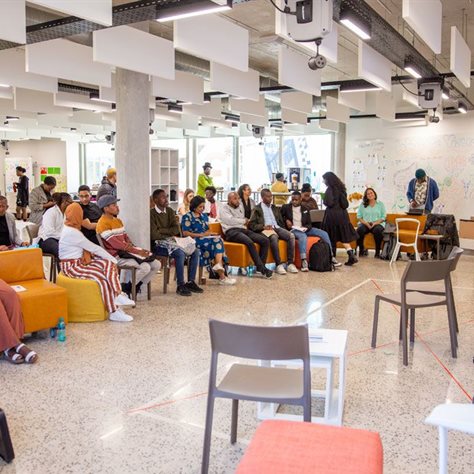
Top stories






More news












In the context of teaching and learning, place and space are often used interchangeably. However, while there is a link between the two, there are some crucial differences which are important to note in the educational sphere, as well as in the broader social contexts within which education and notions of learning are located.


Space is usually about location, whereas place is usually geographical and geopolitical.
It is thus arguably more useful in education to talk about place, because we all come into spaces with histories and through making meaning, space becomes place through our own set of experiences.
In teaching and learning, space is the classroom, and place is the classroom in relationship with and to others – for example, learners, teachers, and coaches.
These terms are crucial in thinking through educational processes. According to Grunewald (2003:627), 'Recognising that places are what people make of them', is an approach that puts people at the centre of places and place making:
“If human beings are responsible for place making, then we must become conscious of ourselves as place makers and participants in the sociopolitical process of place making. Educationally, this means developing the connections with places that allow us to invest them with particular kinds of meaning.”1
Therefore, place is what gives a space meaning and a connection to a cultural or personal identity.


Framing learning with the concept of ‘place’ can be a useful tool in education and teamwork as a way to get to know others. This can happen through the stories of a particular place and how and in what way we feel connected to a given place.
In terms of doing this, it could happen in two ways:
Either of these approaches can help others in the team learn a bit more about their team members, and how, through identifying with certain places, shapes how they see and experience the social world.
However, creating a sense of psychological safety is crucial in these types of team collaboration exercises. To assist in fostering a psychologically safe environment, setting the context for a given collaboration exercise or practice should also be intentionally creative from the outset, especially where there are power dynamics at work.
For example, this could involve using metaphors to verbally navigate complex issues such as differing histories and positionalities. Using communicative artefacts such as pictures and personal items could also contribute to how a team thinks about or interacts in a collaborative place.


Design thinking also happens in ‘a place’ and therefore, we need to be mindful of the role of place in shaping both people, purpose and ultimately practice. Practitioners and researchers thus need to shift mindsets from thinking understanding about design thinking as an isolated practice to understanding it as a ‘socially situated’ practice and part of a much bigger ecosystem.
In other words, bringing ‘place’ into design thinking as part of the framing of design leads to understanding design thinking as a complex socially situated practice (Kimbell 2011)2 i.e. it is a practice in which diverse groups of people with their varied backgrounds and ways of knowing come to learn together. This brings a level of complexity into design and design thinking, positioning it a potentially important approach to complex problem-solving3.


To conclude, in design-led thinking, it is important to acknowledge processes of power and privilege in place. We need to make the effort to shift focus off the individual design-thinking coach and the broader coaching team to include the project partner and the broader social context as an example.
Such a shift reflects the understanding that design thinking is not a neutral practice; it is a social practice located at the nexus of a complex set of power relations visible across a range of places, both locally and globally.
1. Gruenewald, D. A. (2003). Foundations of place: A multidisciplinary framework for place-conscious education. American Educational Research Journal, 40(3), 619-654 pg. 627.
2. Kimbell, L. (2011). Rethinking design thinking Part 1. Design and Culture, 3(3), pp. 285-306.
3. Kimbell, L. (2012). Rethinking design thinking Part 2. Design and Culture, 4(2), pp. 129-148.